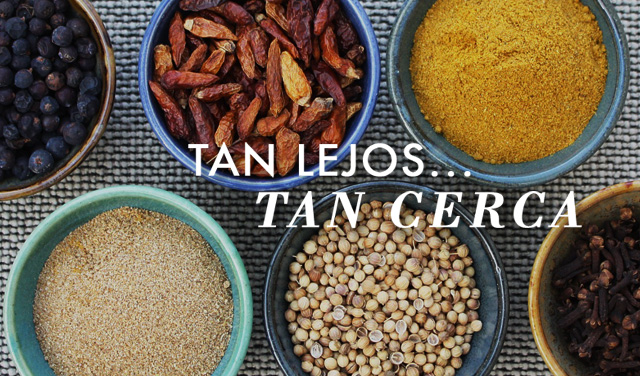So Far... And Yet So Close

When I wrote about pairing wine and Asian food a few months ago, I very briefly mentioned Indian cuisine, with the idea of subsequently broadening my knowledge of the subcontinent's gastronomy. I could not have imagined that I would be writing about the topic while actually in India, but life takes unexpected turns and is full of surprises. So here it is, my first article on wine and Indian cuisine.
Take a moment to consider the vast differences between regional cuisines in Spain, and now imagine what this would look like in a country that spreads across 3,287,595 km²...
In India, once a crucial stop along the famous “Silk Road and Spice Routes,” it is the variety of spices that determine the different end flavors of the dishes. This fact increases the complexity, not only due to the mere use of spices, but because the spices vary from region to region in this enormous country with a thousand-year-old culture.
The first clarification we should keep in mind is that as Westerners we often confuse the terms “spiced” and “spicy,” because our tolerance for the latter is far lower than that of people accustomed to the different degrees of spiciness (or hotness) that certain spices awaken on our palate. As a result, many of the dishes that I have tried struck me as somewhat spicy, whereas most Indians would not consider them so. This is an aspect that enormously complicates pairings in general.
But let's take one thing at a time: since I began my stay in Delhi, I will focus on the food from the north of India thanks to the incredible master class I was given by Amil Khurana, chef at the Aagan restaurant.
My first surprise: the cuisine from the north of India is spicier than its southern counterpart. The logic behind this is unshakeable—the colder the climate, the more heat is needed to combat the temperatures, and spiciness “produces heat.”
Every chef has their own style when it comes to combining the different spices, a legacy of their mother's home cooking. Amil Khurana calls it “mom style.” The different curries and sauces reflect this legacy in the way they combine a vast variety of spices. In Khurana’s case, he uses up to 12 or 13 different spices. As opposed to Mediterranean cooking, Indian cuisine does not involve a lot of dried herbs, although we do share a few seeds, such as cumin or fenugreek.
Indian cuisine employs three different types of fats: vegetable oil, sunflower oil and the famous ghee, which is a milk-based fat, although it isn't butter as we know it.
The biggest surprise, however, was discovering that Indian and Mediterranean (especially Spanish) cooking have a basic element in common: the sofrito, a mix of fried onion, garlic and tomato. With the exception of oven-baked dishes (tadoor), all of the stews are built around a base of stir-fried onion, garlic and tomato, along with another ingredient that is less common in our cooking: ginger, which gets mixed in with the crushed garlic. The use of legumes (lentils and chickpeas) is yet another bridge to our culinary traditions. In trying to find Torres wines that would pair well with the food from this part of India, I focused on these shared elements.
With fish stews (less common in this part of the country) and stews made with vegetables and fresh cheese, known as paneer, a fresh white with a certain roundness like the Parellada in Viña Sol or the partially aged Gran Viña Sol makes for a perfect choice. With slightly spicy dishes, the acidity will clean our palate and stimulate our salivary glands, thus hydrating the inside of our mouth.
When it comes to chicken, we can experiment with light or medium-bodied reds like Atrium Merlot or even a Tempranillo like Coronas or a young Garnacha like Sangre de Toro. The result is surprisingly good because they have a lot of fruit, smooth but noticeable acidity and a slight nuance of spices.
As for lamb stews, as long as the spiciness does not dominate the palate, more full-bodied wines are a good match, such as Ibéricos, Celeste Crianza, Gran Coronas or Gran Sangre de Toro. I'm particularly partial to our Rioja and our Garnacha. In terms of character, they perfectly combine varietal fruit acidity with the spiced notes imparted by aging, two elements that turned out to be key when it came to finding a wine to pair with this type of Indian stew.
This is all for now. The time has come to leave Delhi and the north and head south to discover the culinary surprises awaiting me at the different stops on this great Bodegas Torres tour. Stay tuned, I'll tell you all about it very soon.
Until next time!
From Delhi,
Sergi Castro


